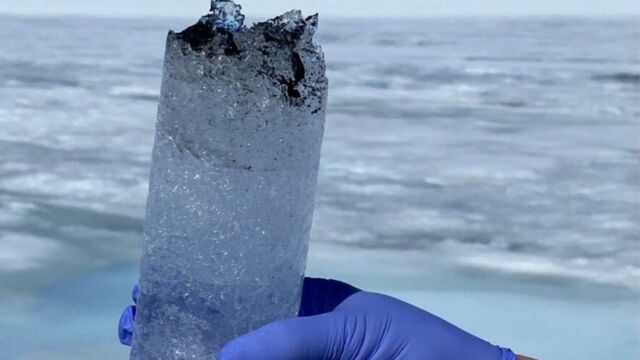Over the past decade, scientists have discovered that tiny algae contribute significantly to the appearance of a 'dark zone,' a darker band of rotten ice on the southwest coast of Greenland, so large it's visible from space. An expert told Insider that the algae blooms are a consequence of climate change and part of a vicious cycle that will cause the ice to melt faster and faster.
Discover our latest podcast
Rainbow algae
The darker ice's lower albedo (reflecting power) absorbs more heat from the sun, which means it melts faster than whiter patches. These 'snow algae' and 'ice algae' have evolved to produce a range of colours to protect themselves against the intense sunlight that bounces off snow or white ice. Professor Liane G. Benning told Insider:
There are different species of algae in snow and ice. Those in the ice are purple. Those in snow can be green, yellow or red.'
She is an expert in geochemistry at the Free University of Berlin and the GFZ research center in Potsdam, and she is one of the principal scientists of the DEEP PURPLE project, which studies algae in ice.
Watermelon snow helped icebergs melt in Alaska
Snow algae are the reason why 'watermelon snow' can be seen on mountains and icebergs all over the world. In 2020, these algae coloured the Italian Alps pink. A 2017 study found that watermelon snow contributed to the melting of icebergs in Alaska.

In Greenland, snow algae are present, and they cause watermelon snow inland, far from the coast. But it's the ice algae, which thrives where ice melts, that causes the most concern. These algae produce a dark purple pigment when they bloom.
'As soon as the ice melts, they start to proliferate,' explains Liane Benning. According to her, ice algae proliferate because ice melts faster and over a longer period of time. Previously, Greenland's ice melted over a summer period of about 50 days, Benning explained. 'Now it's up to 75 days a year.'
Melting faster and faster
A 2019 study showed that the Greenland ice sheet was melting seven times faster than in 1992.
[Mankind] increases the [global] temperature, there is more melting, there are more algae, there are more pigments. If there is more pigment, the ice is darker, it melts more. [...] These algae are a consequence of climate change, not a cause.

According to Liane Benning, algae are the biggest contributors to the dark tint of the Greenland's Dark Zone, but not the only ones. Other factors include mineral dust released during the melting of the ice cap, as well as soot from industrial production and forest fires that drifts to Greenland and then settles in
The main factor behind the rise in sea levels is the melting Greenland ice. Scientists warned in 2020 that the situation had reached a 'point of no return' as ice is disappearing faster than annual snowfall can replenish it. Scientists predict that the melting of Greenland could cause sea level to rise from 45 centimetres to 1.5 meters over the next 200 years.
But because the models did not take into account the algae that accelerate the process, their predictions could be flawed. Understanding the place of algae in this process could help scientists give a better estimate, says Liane Benning. 'We will not solve the world's equation, but we will help fit a piece of the puzzle that, for now, creates a lot of uncertainty.'















